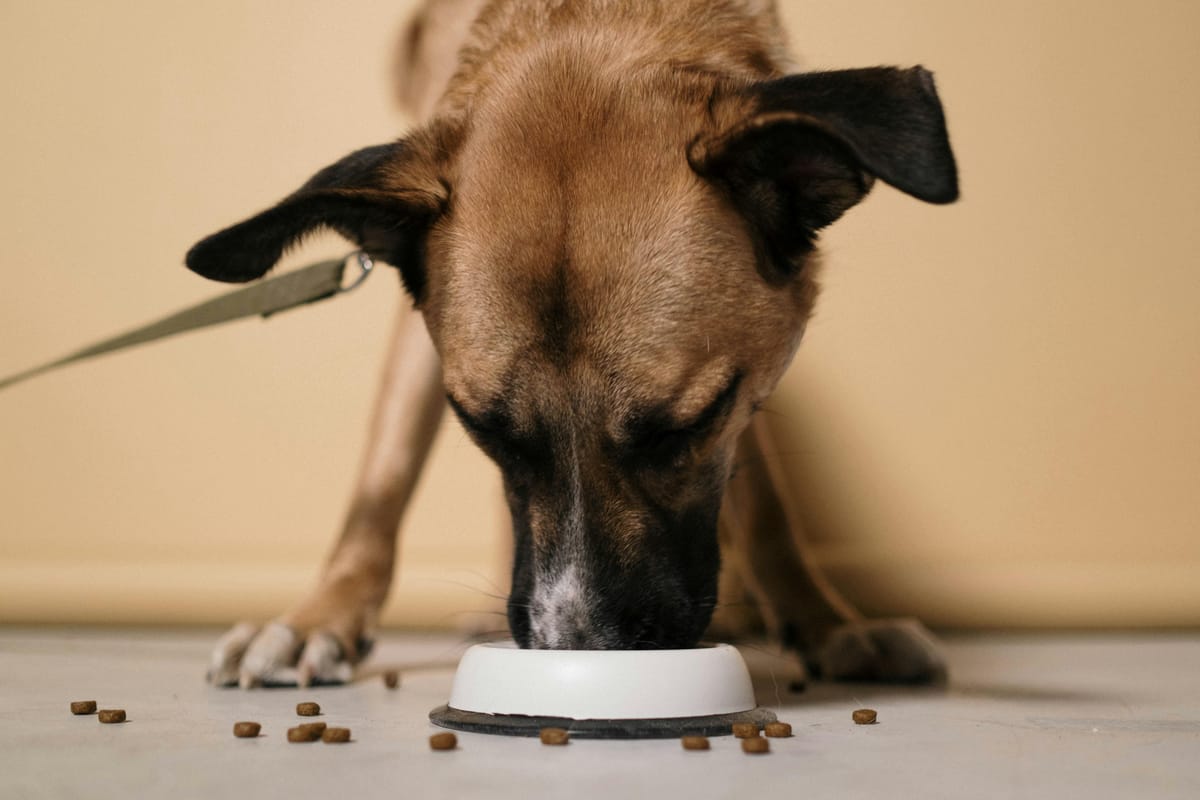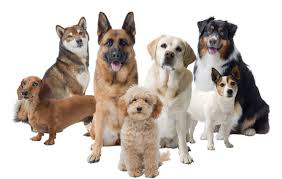How to Choose the Best Dog Food: Advice from a Vet on Top Picks

Choosing the best dog food for your furry friend can be a daunting task, especially with the plethora of options available in the market. As a responsible pet owner, understanding your dog's nutritional needs is key to ensuring their health and happiness. In this article, we will provide valuable insights and advice from veterinarians on how to select the most appropriate food for your dog, taking into consideration various factors such as life stages, ingredients, labels, and safety concerns.
Here's What You Need To Know and the Things To Look For
Signs You May Need to Switch to a New Dog Food
If your dog develops allergies, digestive issues, or skin problems, it might be time to switch to a new dog food. Watch for symptoms such as vomiting, diarrhea, excessive itching, or lack of energy. These may signal that the current dog food may not be meeting their needs or could even be bad for dogs with certain sensitivities.
In such cases, your vet may recommend a novel protein or limited-ingredient dog food to help pinpoint allergies. Remember to transition slowly to any new dog food over 7–10 days to avoid upsetting your dog's stomach.
How to Know if Your Dog Food Meets Nutritional Standards
One key element in choosing a dog food is ensuring the food meets all your pet’s dietary needs. The World Small Animal Veterinary Association recommends selecting brands that employ full-time veterinary nutritionists and conduct feeding trials. This means that the food is tested for digestibility and nutrient absorption, which can give you peace of mind.
Always read the label and look for the AAFCO statement that confirms the food is complete and balanced for your dog’s life stage. Whether you're feeding commercial dog food or preparing meals at home, it's critical to know that the food doesn’t lack essential nutrients.
How to Store Dog Food Properly for Maximum Freshness
Properly storing food within your home can significantly affect its freshness and nutritional value. Keep dry kibble in a cool, airtight container away from sunlight, and always seal wet food or cooked food tightly if not used immediately. Avoid using old food that has passed its expiration date, as it may have lost nutrients or become harmful.
Rotating your stock and checking for recalls can further ensure your dog food would remain safe and healthy. Buying in smaller quantities may be a better option if you’re not feeding in bulk, especially when using fresh dog food that spoils quickly.

What is the Best Dog Food for My Pet?
How to Determine the Best Food for Dogs?
Determining the best food for dogs involves understanding their individual needs based on their age, breed, size, and health conditions. Every dog has unique nutritional requirements; for instance, puppies require more protein and calories to support their growth, while senior dogs may need a diet lower in calories yet rich in fiber to maintain gastrointestinal health. Consulting with a veterinarian or a veterinary nutritionist can help you choose the best dog food tailored to your pet's specific needs, whether it be kibble or wet dog food. You should also consider the dog's activity level; highly active dogs may benefit from a more nutrient-dense food that provides the energy they need to thrive, potentially in the form of kibble.
What Ingredients Should I Look For in Dog Food?
When selecting dog food, the ingredient list is crucial. Look for a high-quality protein source as the first ingredient, such as chicken, beef, or lamb, as this indicates that the food will contain the essential amino acids your dog needs for muscle maintenance and energy. Avoid foods with vague terms like "meat meal" or "by-products." Instead, choose dog foods that specify the type of meat used. Additionally, whole food ingredients such as fruits, vegetables, and grains can provide vital nutrients and fiber. It's also essential to ensure that the food is labeled "complete and balanced," which means it meets the nutritional standards established by the AAFCO (Association of American Feed Control Officials).
Which Dog Food Brands are Recommended by Vets?
Many veterinarians recommend specific dog food brands based on their quality, nutritional value, and safety history. Some well-regarded dog food brands include Hill's Science Diet, Royal Canin, and Purina Pro Plan. These brands have undergone rigorous testing and adhere to high safety standards, ensuring that the food you choose for your dog is both nutritious and safe. Always consult your vet to find out which dog food brand might be the best fit based on your dog's health and dietary needs.
Should I Feed My Dog Wet Food, Dry Kibble, or Fresh Dog Food?
Choosing whether to feed my dog wet food, dry kibble, or fresh dog food depends on their health, lifestyle, and preferences. Canned dog food can be more palatable for picky eaters and offers higher moisture content, which helps with hydration. On the other hand, dry kibble is convenient to store, helps maintain dental health, and may make up the bulk of the food for many dog owners. Meanwhile, fresh dog food options are growing in popularity as they often use whole ingredients and are minimally processed, although they can be more costly and require refrigeration.
The best choice depends on your dog's age, activity level, and any medical conditions they may have. Consulting your vet is always the best approach to determine which food is best for your dog and whether a cooked food or raw diet might be a good fit.
How to Read Dog Food Labels Effectively?
What Does the Dog Food Label Tell You?
Understanding how to read dog food labels can greatly influence your choice. The label provides essential information about the ingredients and nutritional content of the food, including whether it is dry dog food or wet dog food. Look for the guaranteed analysis section, which lists the minimum and maximum percentages of protein, fat, fiber, and moisture. This analysis can help you compare the nutritional value of different dog foods. Additionally, the ingredient list on a dog food package is ordered by weight, meaning the first few ingredients are the most significant components of the food. A higher-quality dog food will usually feature more whole food ingredients and fewer fillers.
How to Identify Whole Food Ingredients?
To identify whole food ingredients, focus on the first few items listed on the dog food label. Ingredients such as whole meats, vegetables, and grains should take precedence. Avoid dog foods that list fillers like corn, soy, or artificial preservatives. A quality dog food will prioritize whole grains like brown rice or oats and include vegetables like sweet potatoes and carrots, which provide essential vitamins and minerals. Look for terms like "human-grade" or "raw food" if you are interested in feeding your dog a diet that incorporates fresh, minimally processed ingredients.
What Should I Know About AAFCO Standards?
Understanding AAFCO standards is vital when selecting dog food. The AAFCO establishes guidelines that ensure pet food manufacturers meet specific nutritional requirements for dogs. When a dog food label states that it meets AAFCO standards, it indicates that the food has undergone testing and contains the necessary nutrients for a particular life stage, such as puppy, adult, or senior dog food. Always check for the AAFCO statement on the label, as it assures that the food is nutritionally adequate and safe for your dog.

How to Choose the Best Dog Food for Different Life Stages?
What is the Best Puppy Food Available?
Puppies have unique nutritional requirements compared to adult dogs, necessitating a diet that supports their rapid growth and development. The best puppy food will be rich in high-quality proteins, fats, and essential nutrients, often found in kibble formulated to meet their developmental requirements. Look for puppy-specific formulas that are marked as complete and balanced. These foods should contain higher levels of DHA, an omega-3 fatty acid beneficial for brain and eye development. Consult your veterinarian to find the best puppy food available that aligns with your puppy's breed and size.
How to Select Food for Adult Dogs?
When selecting food for adult dogs, it is crucial to choose a diet that maintains their health and energy levels, considering their different nutritional needs. Adult dog food should contain a balanced ratio of protein, fats, and carbohydrates to support their overall well-being, ensuring maximum amounts of essential nutrients. Look for dog food brands that offer specialized formulas based on your dog's size, as large and small breeds have different nutritional requirements. Always ensure that the food contains sufficient fiber to aid digestion and maintain a healthy weight.
What Should I Feed My Senior Dog?
As dogs age, their nutritional needs shift, making it essential to adjust their diet accordingly, perhaps incorporating wet dog food for easier consumption. Senior dog food typically contains fewer calories and is enriched with fiber to help with digestion. It should also include joint-supporting supplements like glucosamine and omega fatty acids to manage any age-related health issues. Consult with your veterinarian to determine the best senior dog food that meets your dog's changing needs and helps keep them active and healthy as they age.
Understanding the Role of Nutrition in Dog Sports and Active Lifestyles
Dogs involved in dog sports or with highly active routines require more calories and specialized dog nutrition to support muscle maintenance and energy. The bulk of the food should include high-quality proteins and fats to fuel their activity level. Some dog foods contain added nutrients to promote joint health and faster recovery, which are especially beneficial for working or agility dogs.
When selecting a dog food, look for options specifically labeled for active or working dogs. These dog foods are formulated to provide the sustained energy and recovery support your pup needs to perform at their best.
Can Grain-Free Dog Food be Beneficial?
What are the Pros and Cons of Grain-Free Diets?
Grain-free dog food has gained popularity, with many pet owners believing it could help alleviate certain health issues. The main advantage of grain-free diets is that they may be easier for some dogs to digest, especially those with grain sensitivities. However, it is essential to be cautious, as grain-free options can sometimes contain high levels of peas or potatoes, which may not provide balanced nutrition. Consulting with your vet can help you understand whether a grain-free diet is suitable for your dog.
How Does My Dog Respond to Grain-Free Food?
Monitoring your dog's response to a grain-free diet is crucial. Look for signs of improvement in energy levels, coat condition, and digestion. If your dog seems to thrive on grain-free food, it may be a suitable option for them. However, if you notice any adverse reactions, such as gastrointestinal issues, lethargy, or allergies, it may be necessary to reconsider their diet. Always transition to new food gradually to minimize digestive upset.
Should I Talk to My Vet About Grain-Free Options?
Before making any significant changes to your dog's diet, including switching to grain-free options, it is advisable to have an open conversation with your veterinarian. They can provide insights based on your dog's health history and dietary needs, ensuring that the food you choose is appropriate for your dog. Your vet can also guide you in selecting high-quality grain-free brands that meet AAFCO standards.
How to Handle Dog Food Recalls and Safety Concerns?
What Should I Do if My Dog Food is Recalled?
If you learn that your dog food has been recalled, the first step is to stop feeding it to your dog immediately. Check the recall notice for specific details about the affected batches and follow any instructions provided by the manufacturer. If your dog has consumed the recalled food, monitor them closely for any signs of illness and consult your veterinarian if you have concerns.
How to Stay Informed About Pet Food Recalls?
Staying informed about pet food recalls is vital for your dog's safety. Sign up for alerts from reputable sources such as the FDA or specific pet food companies to stay informed about commercial dog food recalls. Additionally, joining pet owner forums or following veterinary blogs can provide timely updates on any recalls. Being proactive can help you ensure that you're feeding your dog safe and healthy food.
Why is It Important to Monitor Your Dog's Food Safety?
Monitoring your dog's food safety is crucial for their overall health and well-being. Contaminated or unsafe food can lead to serious health issues, including gastrointestinal problems and long-term complications. By staying informed about recalls and reading labels carefully, you can help keep your dog safe and ensure they receive high-quality, nutritious food that supports their health throughout their life, including both dry and wet dog food options.

Conclusion: Choosing the Right Food That Best Fits Your Dog
Choosing a dog food isn’t just about convenience—it’s about health, longevity, and happiness. With so many types available, including canned dog food, dry kibble, and fresh dog food, finding the right food may feel overwhelming. But by learning to read the label, evaluating whether the food meets standards, and consulting your vet, you can confidently find the food that best fits your pup’s lifestyle.
Whether you're feeding commercial dog food or trying out a raw diet, understanding your dog's unique needs and staying informed on nutrition will help your dog thrive. From young puppies to senior pets, each stage of life requires mindful consideration of what’s in their bowl—because when it comes to feeding your furry friend, every bite counts.




